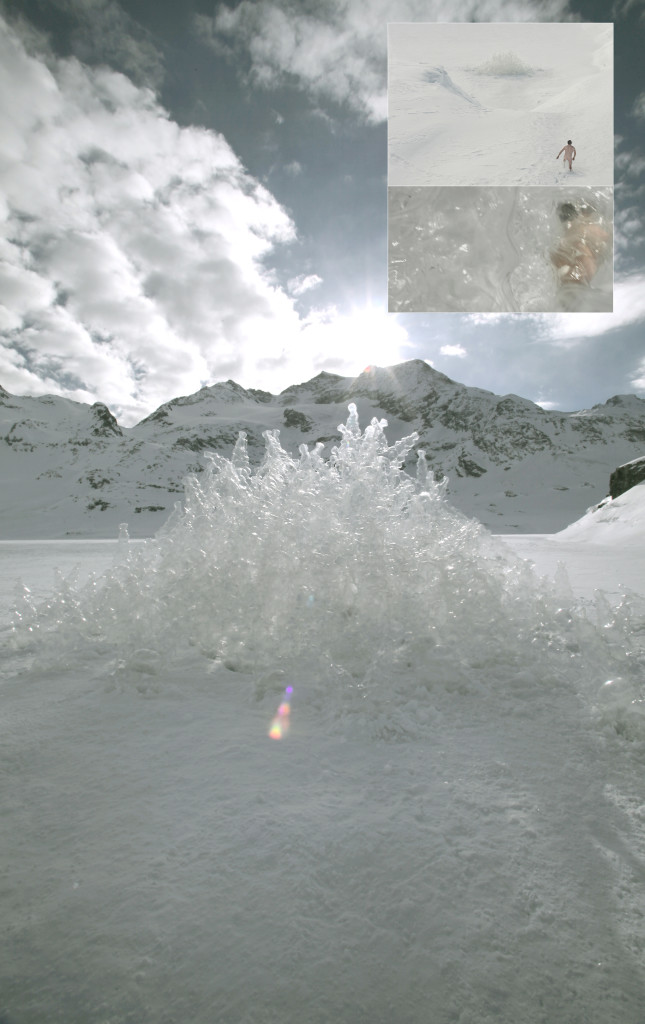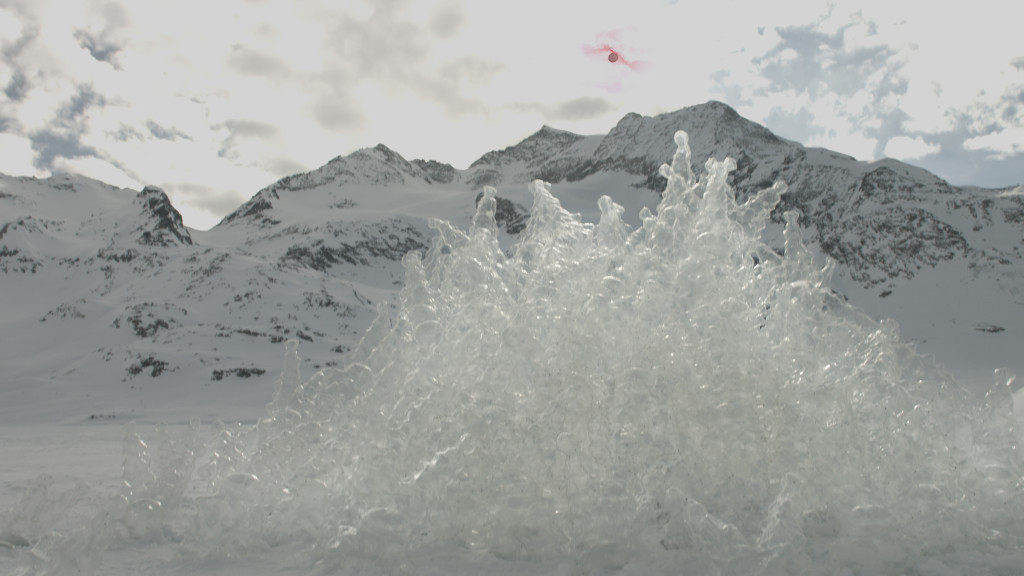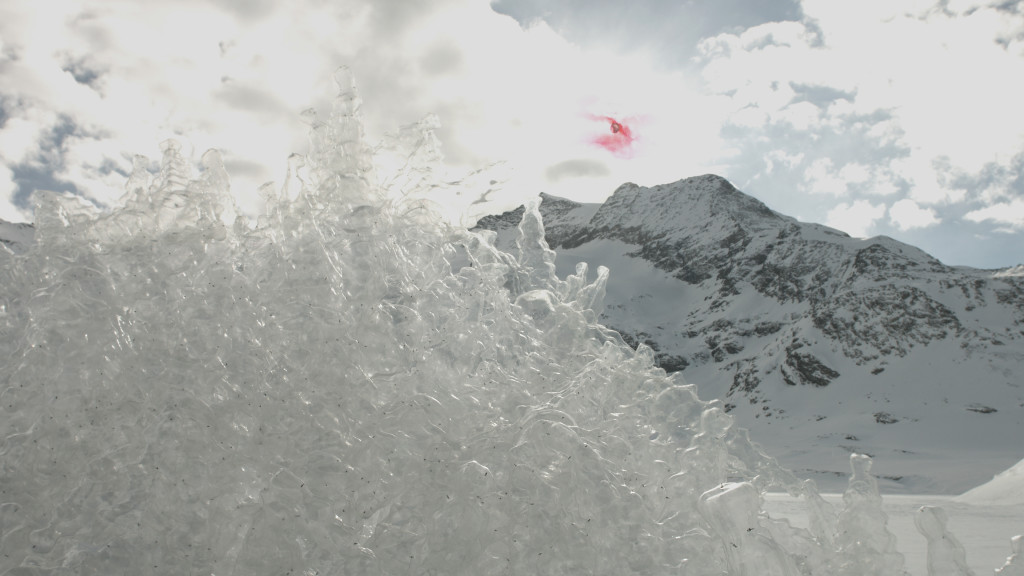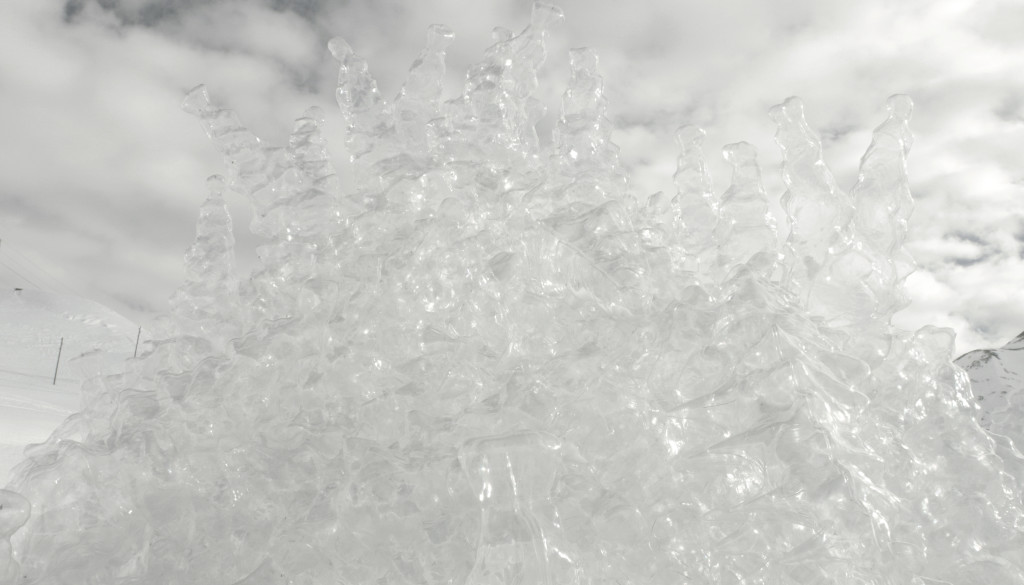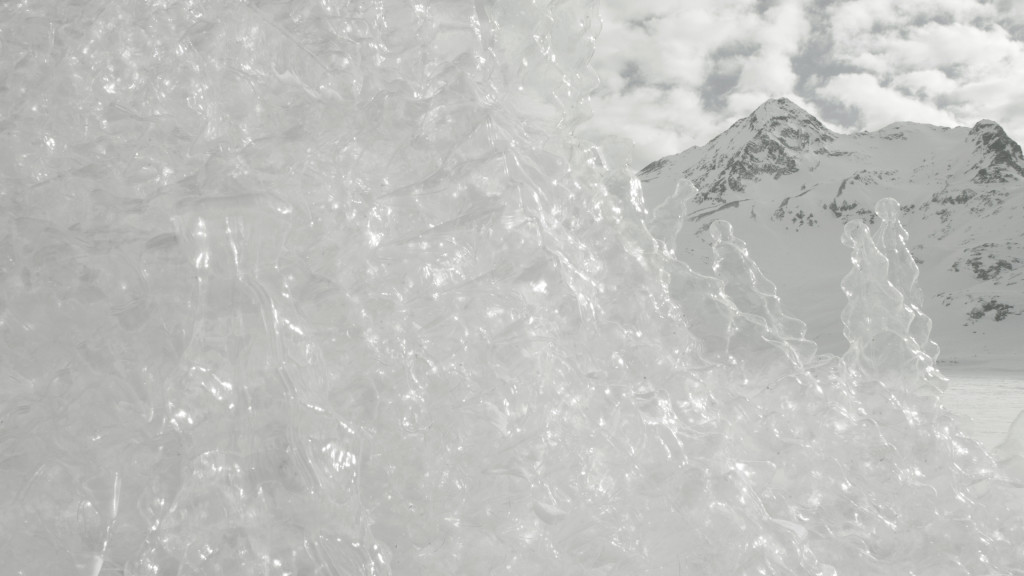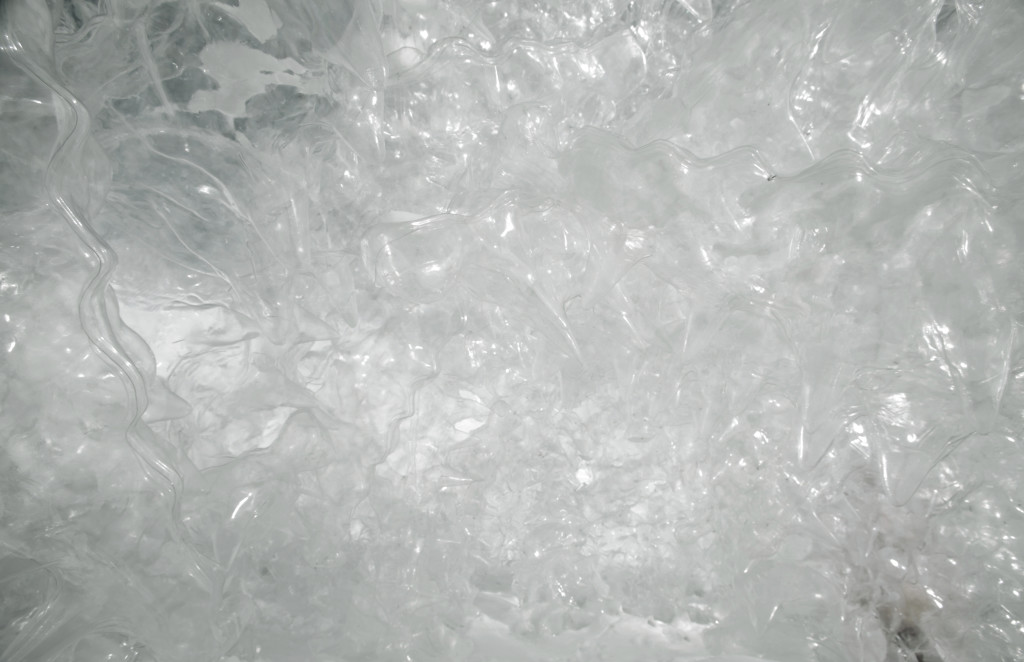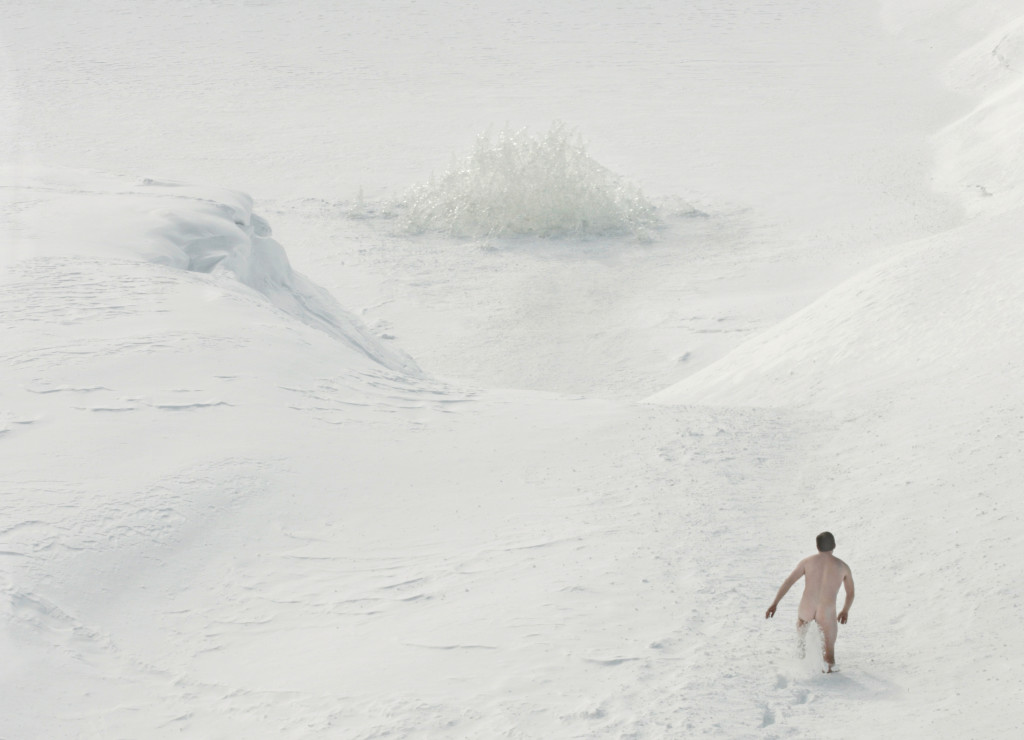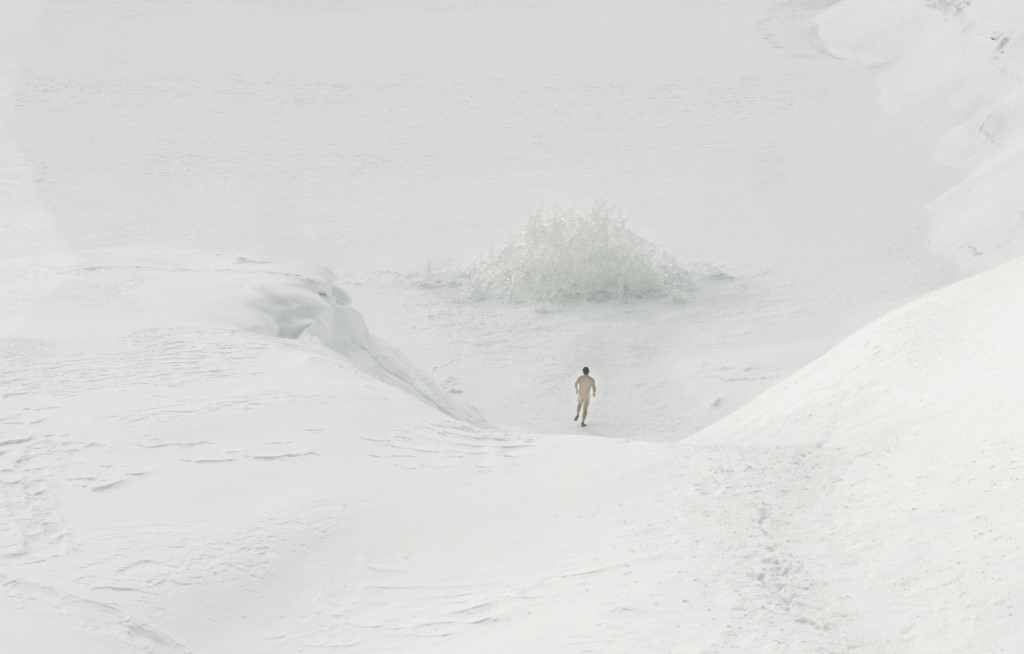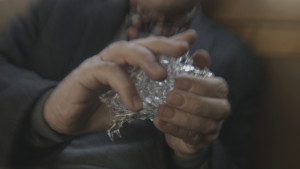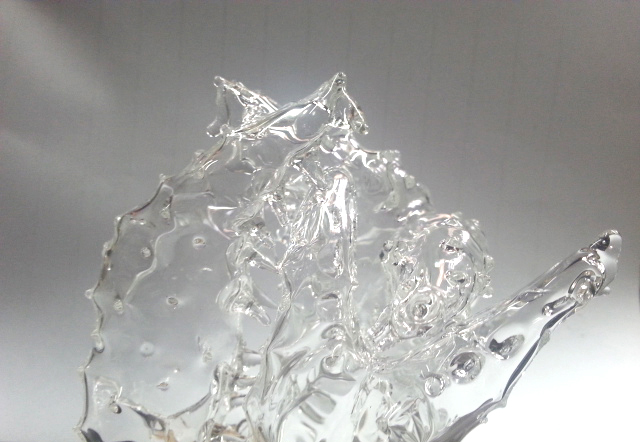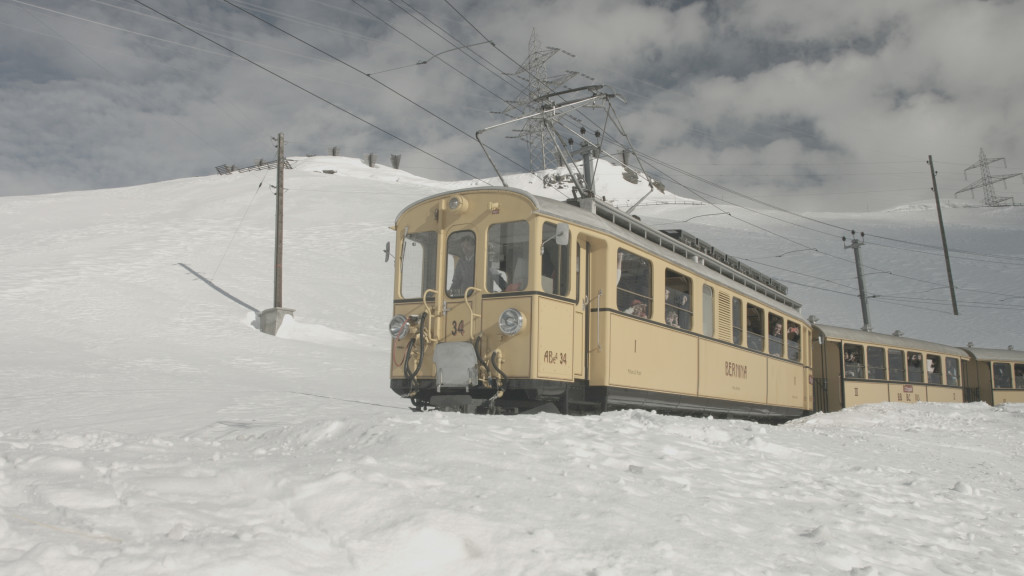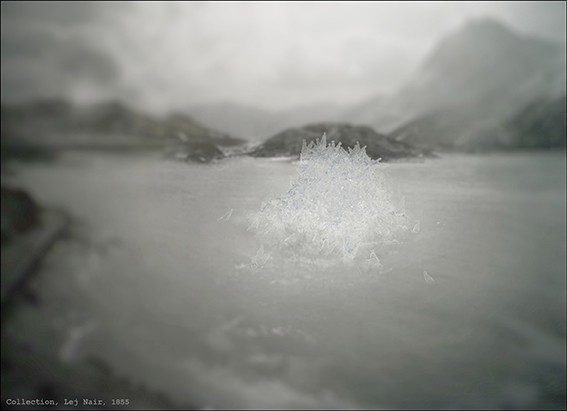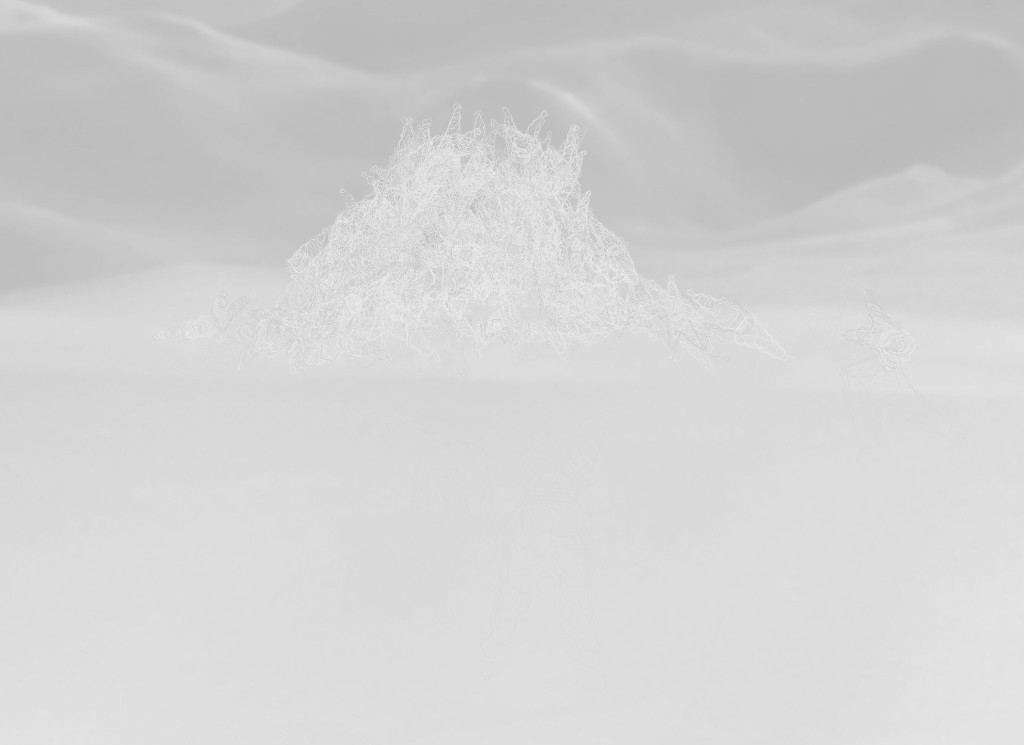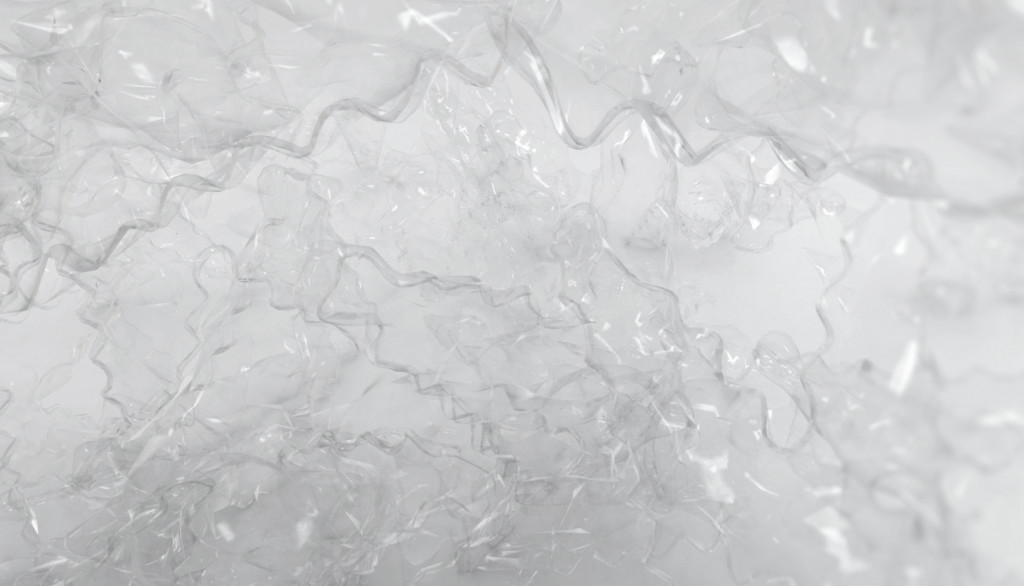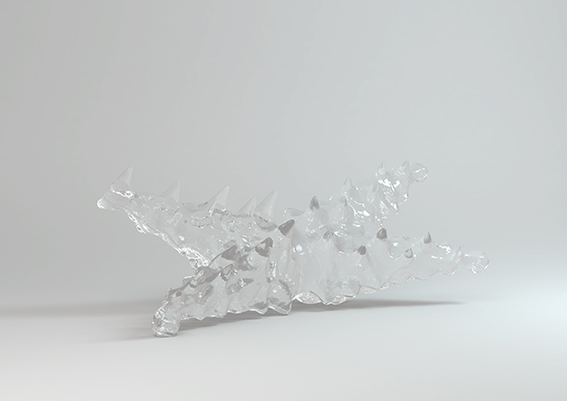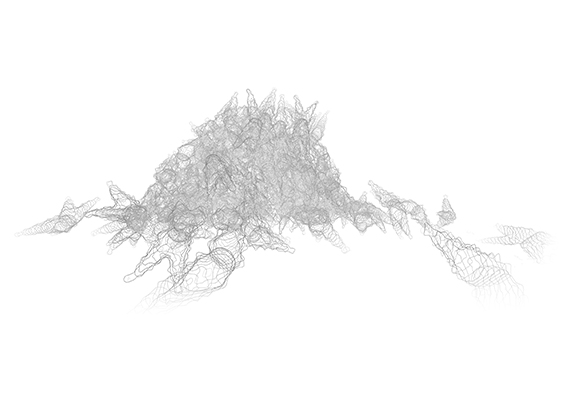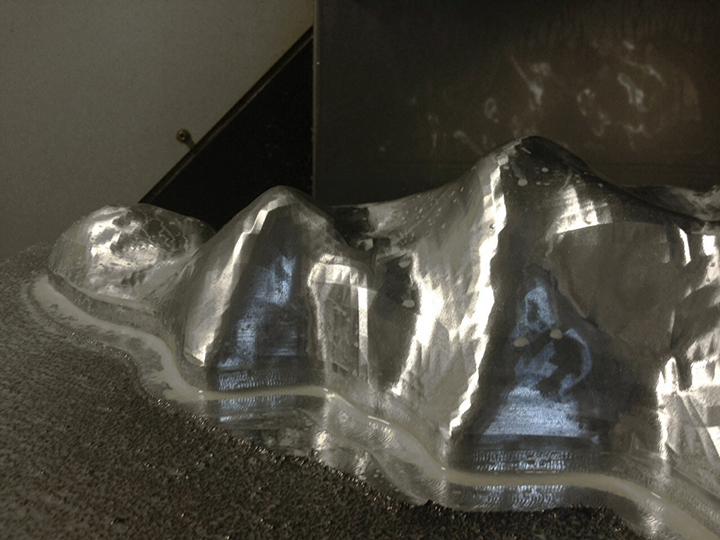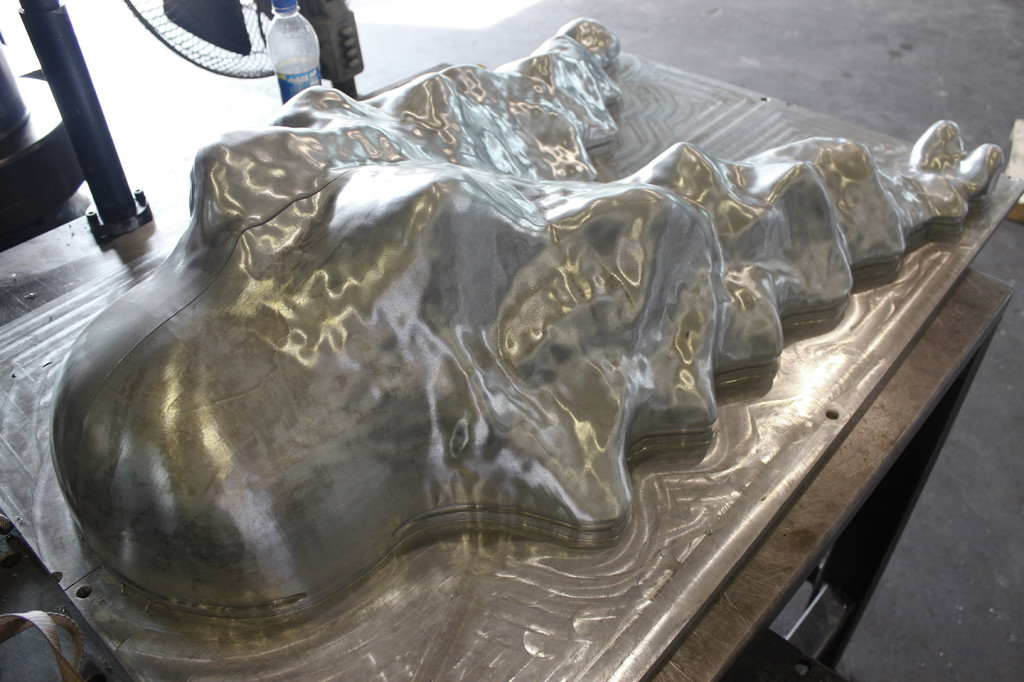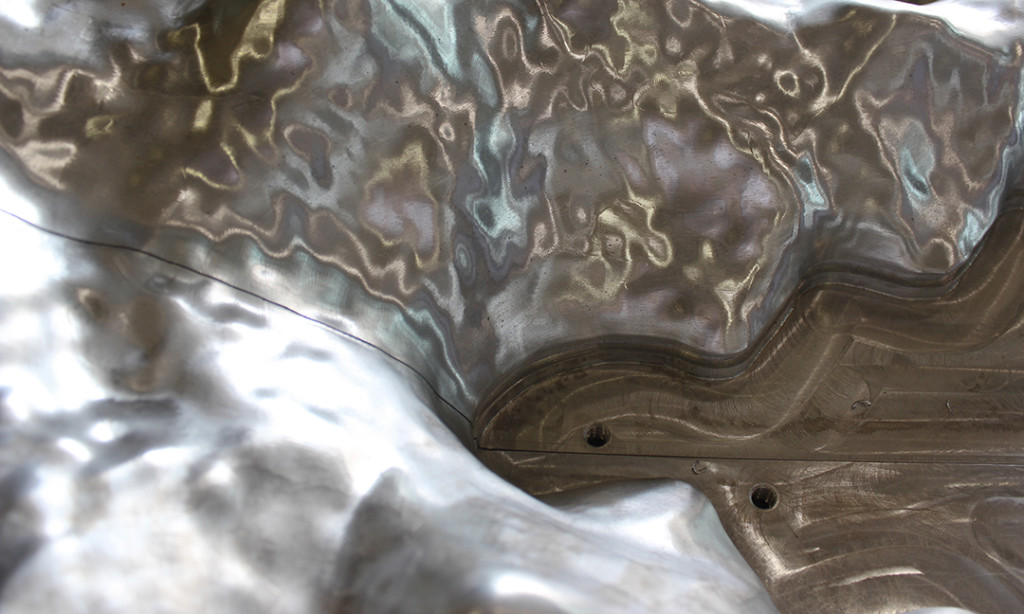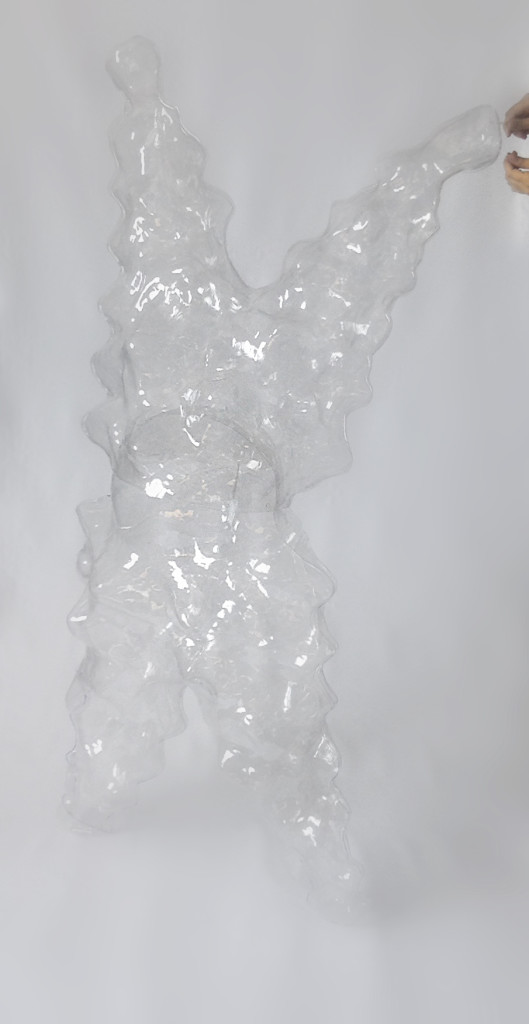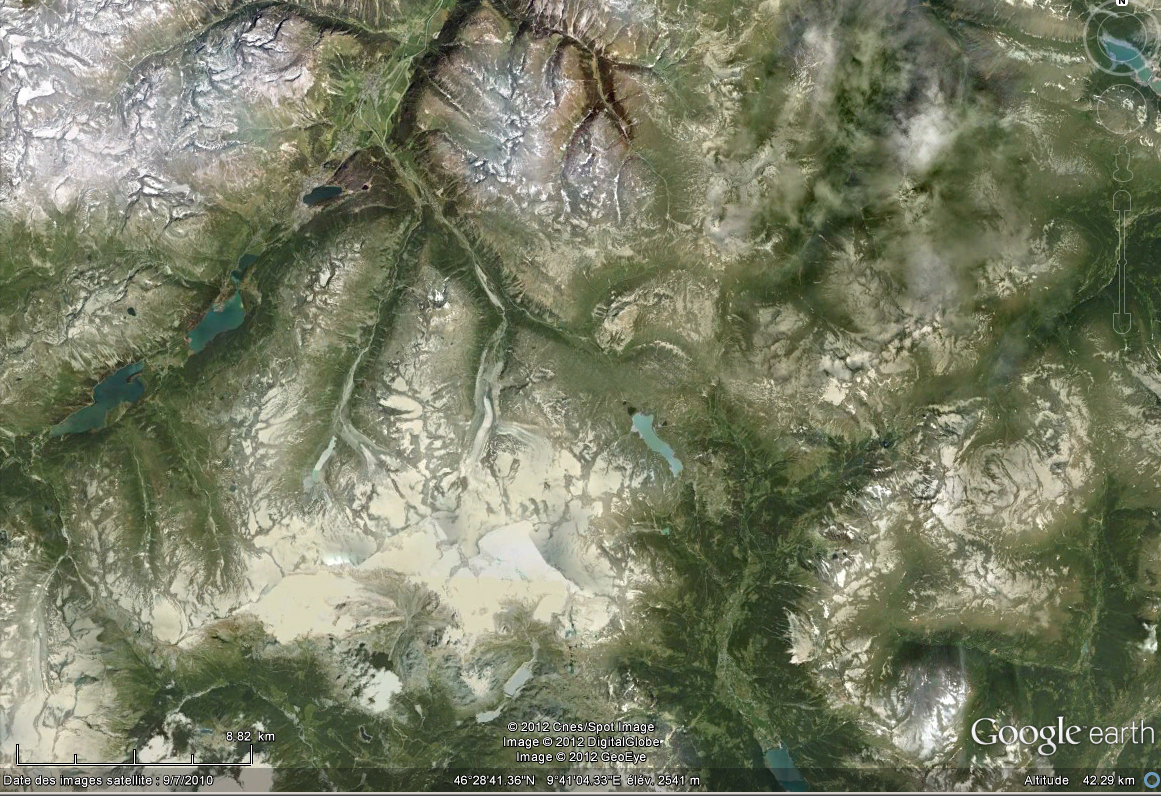———————————————————————————————————–
What could happen, what must.., in this ascendant vehicle, in the snowy whiteness, without perspective and devoid of sight, on a rickety mountain train? We traverse through the cold to reach the last sanatorium up in the heights, where Thomas Mann wrote Tristan[1].
During the journey, an unexpected event suddenly halts the train. This is not purely hazardous. A roll of the dice will never abolish chance[2]. But we will be safe and sound. It has all been foreseen, evaluated, predicted, anticipated… security and safeness considered.
The train is a metaphor[3] or the impetus to reach an illusory point that can never be met. The artefact is in the way. There’s enough paganism, enough mysticism in the mountains to alter the journey’s trajectory of expectedness, of foreseeable modes. Now you are on the bandwagon.
Sounds and noises[4] of uncertain origin, uncertain, explained phenomena, creatures’ tracks[5], chill, hypothermia and its imminent threat, of dilated pupils, of inaudible heartbeats, the anteroom to unconsciousness, mortem-post-mortem, a close call, absolutely painless, ataraxic, asymptotically. As the curve reaches closer to its fate a rite of passage is lived over and over again.
Dignitas / Swiss Criminal Code Paragraph 115[6]
A piling-up of intertwined bodies, contorted, fastened in carnal embraces, a multitude, a humming swarm, the crackling noises of successive congealing, ever-ending. The phase change of water[7], chemistry, sublimation.
Through this experiment our participants will reunite in the good death, an escape or weaning[8]. Here the migration of souls, the exchange for an elsewhere – those on the train will climax indefinitely and then finally, at the cost of our story’s Mcguffin.[9]
Credits
Scenario-Structure-Movie-Texts / New-Territories / M4 / Francois Roche with Camille Lacadee, with Vongsawat Wongkijjalerd and Daniela Mitterberger / 2015
Mac Guffin / Pierre Huyghe
———-
[1] 1903 novel by Thomas Mann, set in a Swiss alps sanatorium
[2] Stéphane Mallarmé’s last major poem, Un coup de dés jamais n’abolira le hasard, 1897
[3] Etymologically ‘metaphor’ means ‘vehicle of transportation’, directly from Latin metaphora, from Greek metaphora – ‘a transfer’
[4] Referred to as music, a hum, or a whisper, but an explanation of a mysterious noise that has been heard by some people over Lej Nair has never been found. In other lands and times it would have been an object of superstitious reverence or dread.
[5] ‘La Diavolezza’, legend of the beautiful she-devil, cause of the disappearance of many young mountain hunters.
[6] Switzerland has legislatively permitted assisted suicide since 1942
[7] Supercooling is the process of lowering the temperature of a liquid or a gas below its freezing point without it becoming a solid. The intrusion of an impure element then results in the instant-freezing of the water.
[8] Weaning, rite of passage, from child to man
[9] A plot device in the form of some goal, desired object, or other motivator that the protagonist pursues, usually forgotten by the end of the story
Critical Apparatuses
Bart Lootsma
Something makes people want to walk, ride or climb to mountaintops, how dangerous an undertaking this may be because of conditions of terrain and weather. It is something completely irrational. Some have themselves brought to the tops of mountains with trains, cable cars and even helicopters. It is often thought that this is to appreciate a sublime, untameable nature, since it has been already the theme of many a sublime Romantic painting or poem. But in fact most Alpine mountain tops are as artificial as a Dutch polder, not just with the cross on top of it, but with mines dug underneath, avalanche protection, restaurants, hotels, ski slopes, ski lifts, half pipes for snowboarders, artificial lakes to produce artificial snow, a view on the urbanized valley below, and in summer cows not for the production of milk and meat but for maintenance. All of this is realized only to enable people dressed in special clothes, helmets and harnesses, to throw themselves down again literally as soon as they have arrived on top, using sleighs, ski, snowboards or specially designed, and high-tech so-called freeride mountain bikes. They hardly have a choice. It has to go fast. Even the sky is filled with gliders and para gliders, enjoying the turbulence along the slopes. An aspect of danger, and at least a flirt with a latent death wish should be involved to feel alive, as a faint memory of older myths. “Everywhere it is machines – real ones, not figurative ones: machines driving other machines, machines being driven by other machines, with all the necessary couplings and connections.” Deleuze and Guattari write, and between the different machines there are just couplings and passages, “functioning smoothly at times, at other times it fits and starts”. 1) The Alps are one big Bachelor Machine, a perpetual carrousel that turns the love for nature into a death mechanism.
Innsbruck, the city where I live, is one of the innovation centres of Alpine sports. . The ‘shadows’ of Bruno Taut and his Alpine Architecture are haunting the stations for the funicular railway up to the Hungerburg as glass memories of the shapes that remain after an ice storm. From the Hungerburg a cable car takes people further up to the North Park with the Seegrube and the Hafelekar, just left of which we find a mountain peak called Frau Hitt. According to different sagas, Frau Hitt once was a woman, a giant queen. About why she turned to stone the stories differ but the best-known version tells that she was so stingy, that when a beggar asked for some food, she gave him a stone instead. So the beggar cursed her, turned Frau Hitt and her horse in stone and left her in the place where we can still find her today. In winter she is dressed in snow; in spring she unveils herself to become the unreachable piece of stone she is in summer, alternatingly attracting and repelling us. All in all, we can see the landscape of the Nordkette in Innsbruck as a complex ecosystem, which is defined by man and nature in equal parts. It includes the social, the economical and even the incorporeal and invisible systems of language: myths, sagas and fairy tales.
It is no different with the landscape of La Diavolezza, a mountain and skiing area near Pontresina in the Swiss Alps, named after a beautiful fairy-queen who allegedly seduced young huntsmen who saw her bathing in Lej Nair, a frozen lake at the summit of the Bernina Pass. The huntsmen who followed her disappeared mysteriously and somehow one must expect they were frozen to death. Freezing to death is a known method for suicide, described among others in Jack London’s To Build a Fire: “… Well, he was bound to freeze anyway, and he might as well take it decently. With this new-found peace of mind came the first glimmerings of drowsiness. A good idea, he thought, to sleep off to death. It was like taking an anaesthetic. Freezing was not so bad as people thought. There were lots worse ways to die. . . . Then the man drowsed off into what seemed to him the most comfortable and satisfying sleep he had ever known. ”2) Suicide is an issue in Switzerland, as assistance to suicide is legal there as long as it does not bring profit. The Swiss Dignitas organization legally assists people who want to terminate their own lives -be it not by freezing to death. For the she-devil haunting Lej Nar, the freezing of the huntsmen was not enough though, and she only left the region when the whole mountain was frozen and covered with a glacier.
Other myths, sagas, fairy tales and literary narratives surround the la Diavolezza area. Thomas Mann’s sanatoriums in Tristan and The Magic Mountain might have been situated here, only accessible by a forgotten branch of the Rhaetian Railway, somewhere high up in the mountains. Paul Scheerbart saw them as logical predecessors of an architecture made entirely out of glass, because they lit the Alps. As such, they were the predecessors of Bruno Taut’s radiating Alpine Architektur, which would crown the mountain tops like an artificial Alpenglühen.3) His protagonists thought they might be healed from tuberculosis here, in times before penicillin was discovered. Most of them died of course.
Who would be better chosen than New-Territories/Francois Roche, Camille Lacadee with their friend Pierre Huyghe to explore this place? Their work –architecture, installations, situations, films, props- is characterized by a mixture of the archaic and science fiction, moving between myth making and pataphysics; schizo-analysis and paranoia. For New Territories, architecture is not just a pragmatic solution for a problem. It is in the extended pragmatism of a specific situation, that its identity and meaning is produced, as a hyper-localism, as Roche calls it, a specific haecceity, an ultimate thisness, as a biopsy of a biotope. This biotope is a part not just of a “deep” or “shallow ecology”, but of something like Deleuze’s flat ecologics, which opens up “the “philosophical subject” to the realm of nonhuman machines, affects, haecceities and what Maturana/Varela call “structural couplings” 4); or Guattari’s ecosophy, which sees ecology as a complex phenomenon which incorporates human subjectivity, the environment, and social relations. 5)
New-Territories produce critical apparatuses in the double meaning of the word. They construct machines that try to reveal disturbances in the systems we are caught up in: misunderstandings, bugs, aberrations, perversions, stutterings. By doing so they also produce critical apparatuses in the sense of footnotes: the critical and primary source material that accompanies an edition of a text. Francois Roche (whose texts sometimes produce almost the same quantity of footnotes as the texts are long, by the way) writes that “machines also simultaneously produce artefacts, assemblages, multiplicity and desires and infiltrate the “raison d’être” of our own body and mind in the relationship to our own biotopes.” 6) Thus the props and McGuffins 7) New Territories make, like the frozen bodies and their miniatures for La Diavolezza, may trigger complex and unpredictable events, which in the end may only exist in our memory or imagination but reveal something about our complex and ambivalent relation to the Alps.
Footnotes
- Gilles Deleuze, Felic Guattari, Anti-Oedipus, Capitalism and Schizophrenia, Penguin Books, London, 2009, pp. 1
- Jack London, To Build a Fire, in: Jack London Stories of the North, The World of Jack London, http://www.jacklondons.net/buildafire.html
- Paul Scheerbart, Glasarchitektur & Glashausbriefe, Verlag Klaus G. Renner, , München, 1986, pp. 57; Bruno Taut, Alpine Architektur, in: Matthias Schirren, Bruno Taut, Alpine Architektur, Eine Utopie – A Utopia, Prestel, München/Berlin/London/New York, 2004, pp. 27-115.
- Bernd Herzogenrath, Nature/Geophilosophy/Machinics/Ecosophy, in: Bernd Herzogenrath, Deleuze/Guattari & Ecology, Palgrave MacMillan, Houndmills, Basingstoke/New York, 2009, pp. 11-12
- Felix Guattari, The Three Ecologies, Continuum Impacts, London/New York, 2008.
- Francois Roche, ‘Alchimis(t/r/ick)-machines), Log 22, Spring/Summer 2011.
- In fiction, a McGuffin is a plot device in the form of some goal, desired object, or other motivator that the protagonist pursues, often with little or no narrative explanation. The specific nature of a MacGuffin is typically unimportant to the overall plot. http://en.wikipedia.org/wiki/MacGuffin
